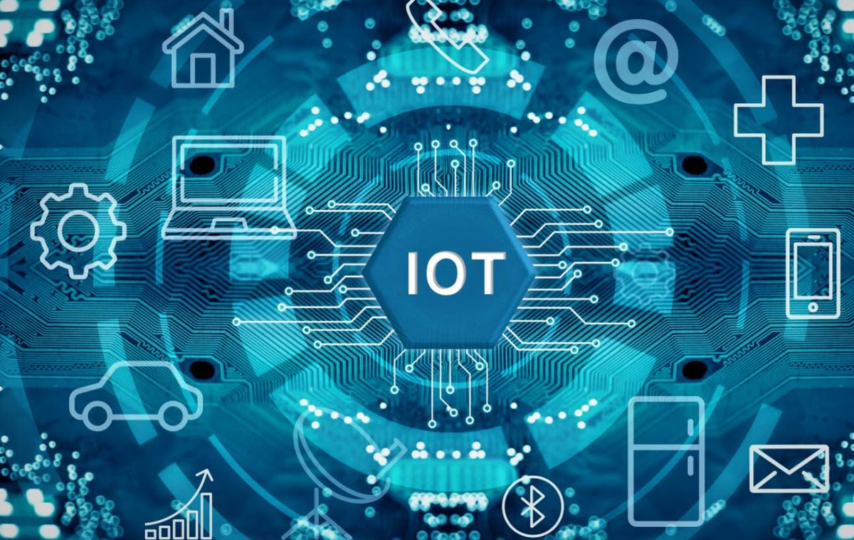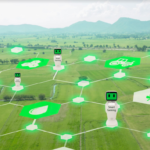It’s fascinating how the buzzword ‘Connected World’ has evolved into a reality through the advent of the Internet of Things (IoT). IoT has become an integral part of our lives, from smart vehicles to smart homes, and it’s transforming various industries as well. Startups, which generally focus on innovative problem-solving or accelerated growth, have also been impacted by IoT in many ways.
As startups seek to make their mark and stand out from the competition, investing in new-gen technologies is critical. It’s no surprise that IoT has become an attractive option for startups to create smarter, more efficient, and adaptable solutions to address specific problems. This is especially true for startups with expertise in harnessing the potential of IoT and IoT app development businesses.
What is IoT?
IoT stands for the Internet of Things. It refers to a system of interrelated devices, objects, or machines connected to the internet and capable of transferring and receiving data from each other.
These devices can range from everyday objects such as household appliances and wearable technology to industrial machinery and equipment.
IoT allows these devices to communicate with each other and with humans, allowing for greater automation, control, and efficiency in various fields such as home automation, healthcare, transportation, and manufacturing.
For example, in the manufacturing industry, IoT sensors can be placed on machines to track their performance, detect issues before they cause a breakdown, and optimize maintenance schedules. In the logistics industry, IoT can be used to track shipments and monitor the condition of goods in transit, ensuring that they are delivered on time and in good condition.
How can startups can leverage IoT for Growth
1. Deep Understanding of Customers
Customer experience (CX) has become an increasingly important factor in determining the success of businesses today. Customers have a wide range of options available to them, and their decision to do business with a particular company is often influenced by the quality of the experiences they have with that company.
A positive customer experience can lead to customer loyalty, positive word-of-mouth advertising, and increased revenue for the business. Conversely, a negative customer experience can lead to lost business, negative reviews, and damage to the company’s reputation.
To create delightful, personalized experiences for each customer, businesses need to have a deep understanding of their customers’ preferences, behaviors, and needs. This is where IoT networks can be of great help.
IoT networks are made up of interconnected devices that are capable of collecting and transmitting data. By using sensors and other IoT devices, businesses can gather a wealth of information about their customers, including their location, buying habits, and even their mood.
This data can be processed and analyzed in real-time, enabling businesses to anticipate the needs of their customers and provide personalized experiences that meet their specific requirements. For example, a business could use IoT sensors to track a customer’s location and send personalized offers or recommendations based on their current location or previous purchases.
2. Use of IoT for Marketing & CRM
By harnessing the data collected by IoT devices, startups can gain a deeper understanding of their customers and their behaviors. This can help them to create more targeted and personalized marketing campaigns, and to reach their customers through the channels that are most likely to be effective.
For example, if a startup is selling a wearable device that tracks fitness, they could use the data collected by the device to personalize their marketing campaigns based on the customer’s activity levels, location, and other relevant factors.
IoT technologies can also enable startups to monitor customer engagement in real-time. By tracking how customers are using their products, startups can identify areas where there may be issues or opportunities for improvement.
For example, if a startup’s product usage is declining, they can investigate the root cause of the problem and take steps to address it. This could involve improving the product’s functionality, enhancing its features, or providing better customer support.
In addition to improving customer retention, IoT technologies can also help startups to increase CLV. By collecting data on customer behavior over time, startups can identify patterns and trends that can inform their pricing and product development strategies.
3. Cost Reduction
IoT has the potential to revolutionize the way businesses operate and drive significant cost savings. By leveraging IoT technologies, companies can reduce production downtime, automate repetitive tasks, and optimize their operations to improve efficiency and productivity.
One of the key benefits of IoT in business is the ability to automate repetitive tasks. By deploying IoT devices, businesses can automate tasks such as data collection, analysis, and reporting, freeing up the human workforce to focus on more complex and strategic tasks. This can lead to increased productivity and efficiency, as well as cost savings.
In addition to automation, IoT devices can also help businesses monitor and optimize their operations in real-time. By collecting and analyzing data from multiple sources, such as temperature sensors, humidity sensors, motion sensors, and CCTV cameras, businesses can gain critical insights into their operations and identify areas where improvements can be made.
This can lead to significant cost savings by reducing waste, improving resource utilization, and streamlining processes.
4. Generate Demand
IoT has revolutionized the consumer market, enabling people to connect with their devices in ways that were once only imagined. IoT-based devices are now commonplace in many households, from smart speakers like Amazon Echo and Google Home, to automated locks and wearable devices.
One of the key benefits of IoT devices for consumers is the ability to simplify their lives. IoT-based devices can automate routine tasks, provide real-time feedback and notifications, and enable remote control of devices, all of which can make life more convenient and comfortable.
5. Remote Working
IoT devices and solutions are making it possible for employees to work from anywhere and at any time, allowing for greater flexibility and work-life balance.
IoT technology can also facilitate remote collaboration and communication. Video conferencing tools, messaging platforms, and virtual whiteboards are all examples of IoT-powered solutions that allow teams to work together effectively, no matter where they are located.
With IoT-enabled collaboration tools, remote teams can easily share files, exchange feedback, and work together in real-time.
Moreover, IoT solutions can help managers monitor and support their remote workforce. IoT-powered productivity tools can track employee performance and provide real-time feedback, while sensors can monitor workplace conditions like temperature and humidity to ensure employees are comfortable and productive.
6. Improve Business Security
In addition to CCTV systems, IoT can also improve workplace safety by monitoring equipment and machinery. By using IoT sensors to gather data about machine performance, managers can identify potential issues before they cause accidents or equipment failure. This proactive approach helps prevent downtime, injuries, and costly repairs, making the workplace safer and more productive.
Moreover, IoT devices can be used to monitor environmental factors that could impact worker safety. For example, temperature and humidity sensors can alert managers to potentially hazardous working conditions, while air quality sensors can detect the presence of dangerous chemicals or fumes. This allows managers to take prompt action to address any safety concerns and protect workers from harm.
IoT can also improve worker safety by providing them with wearable devices that can monitor their vital signs and alert managers in case of any health issues or emergencies. For instance, IoT-enabled smartwatches can track a worker’s heart rate, body temperature, and other vital signs and send alerts if they detect any abnormalities. This enables managers to respond quickly to medical emergencies, potentially saving lives.
Conclusion
IoT has become a game-changer for startups and businesses, providing them with a range of capabilities and opportunities to improve their operations and achieve business growth. However, as you rightly mentioned, IoT adoption can be challenging, and startups need to approach it strategically.
One way to overcome the challenges of IoT adoption is to partner with a specialized IoT deveopment who can help startups develop and implement an IoT strategy that aligns with their business goals.
These IoT specialists can assist with hardware and software development, integration, deployment, and ongoing management, allowing startups to focus on their core competencies while leveraging the benefits of IoT technology.








